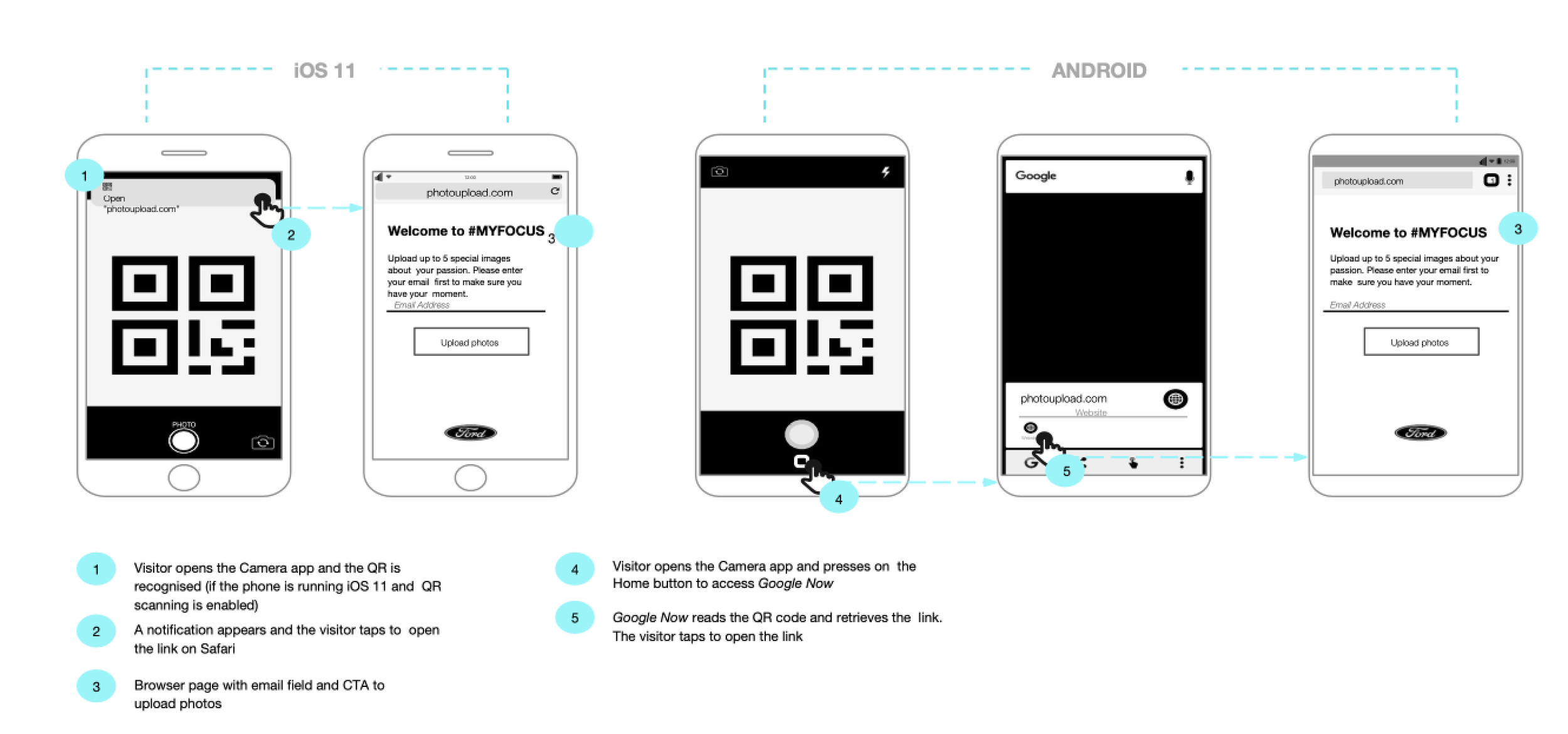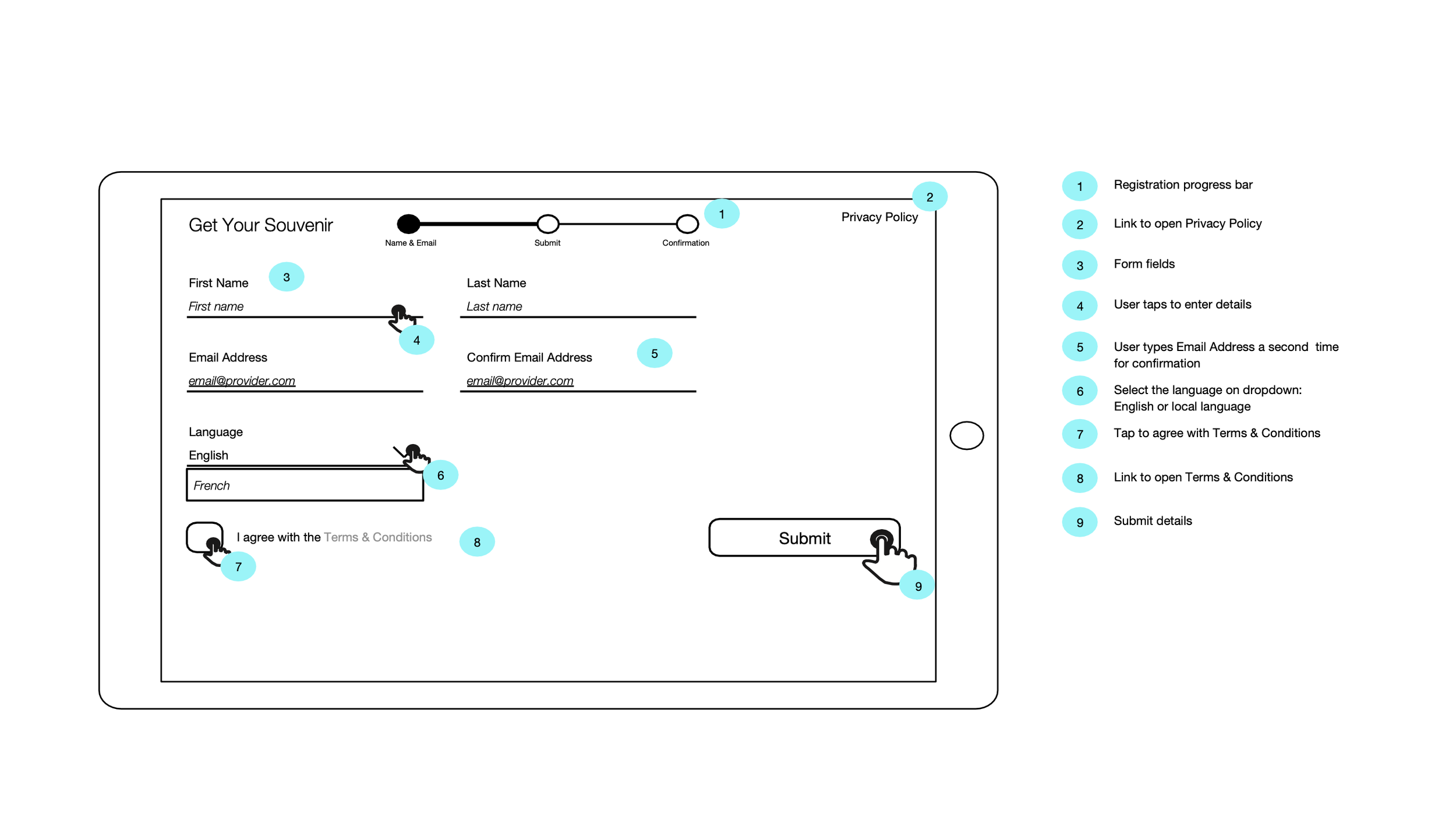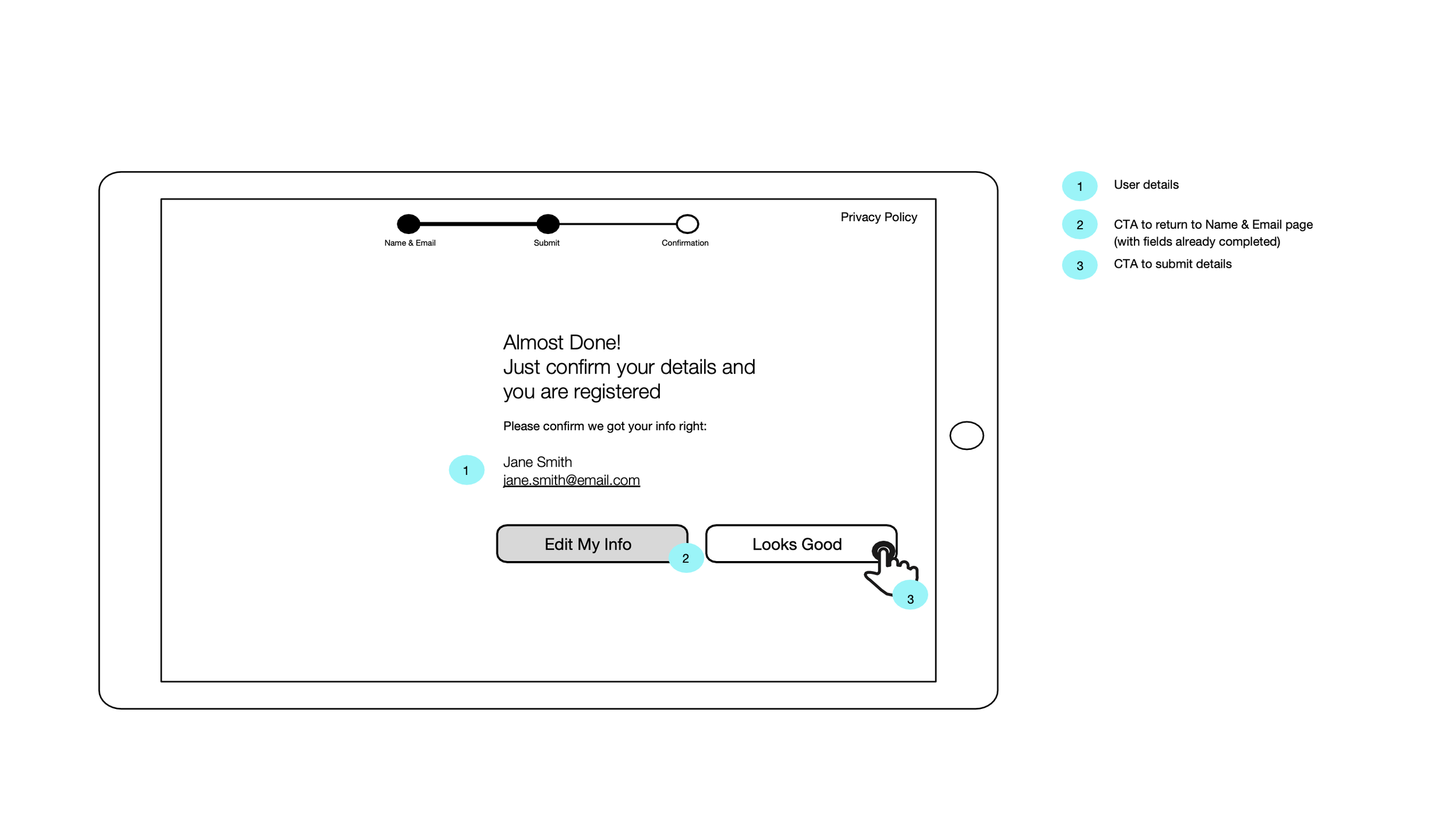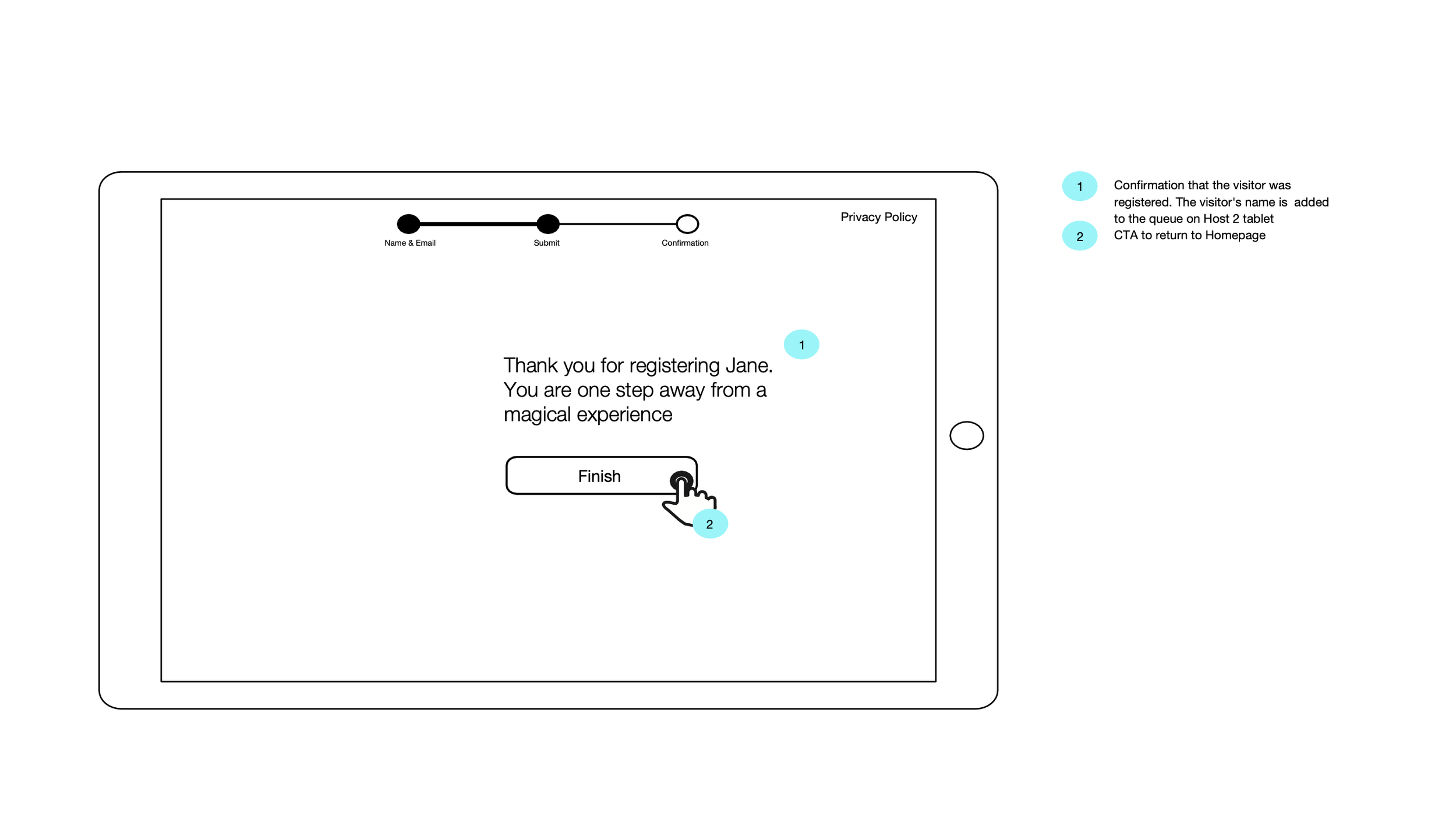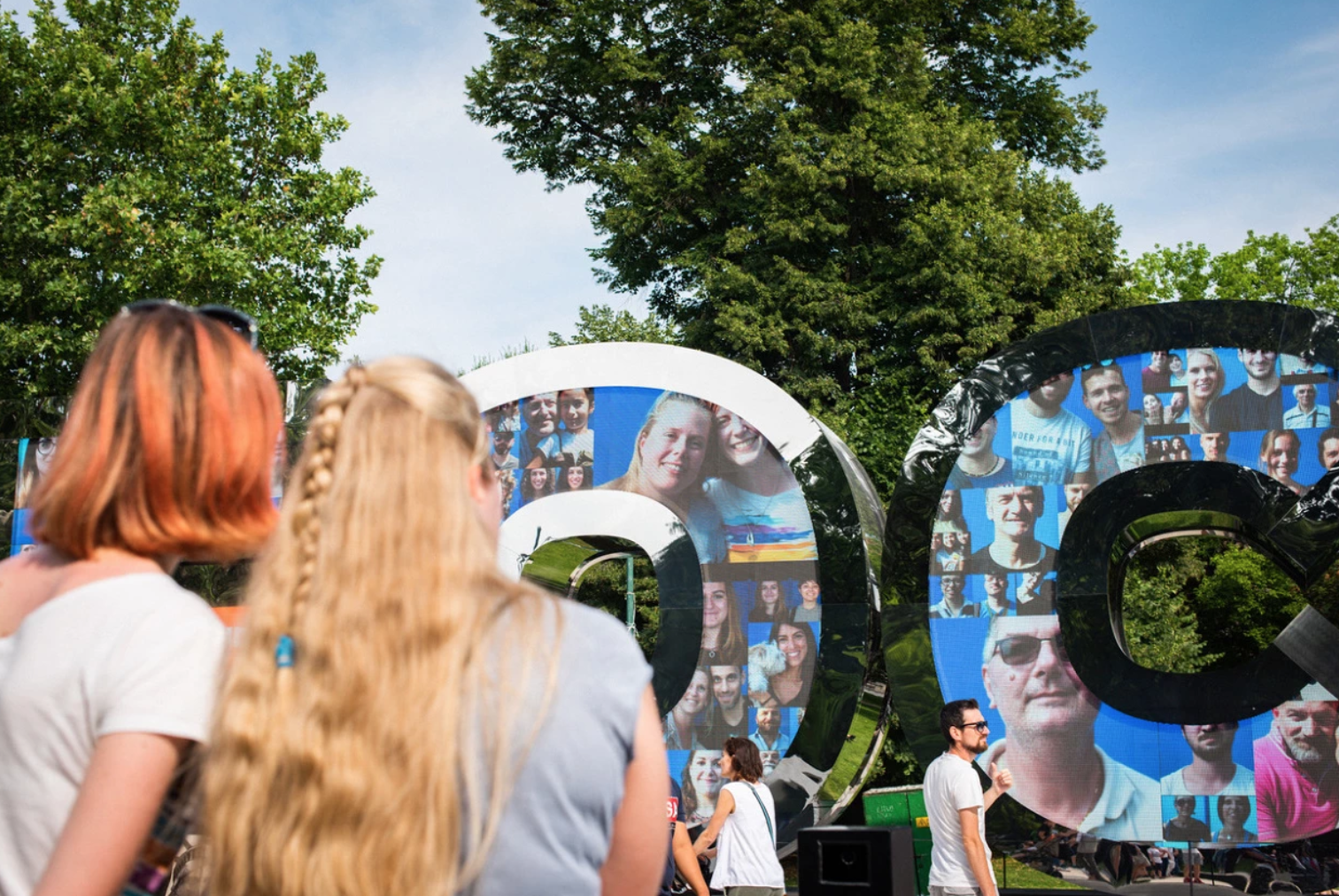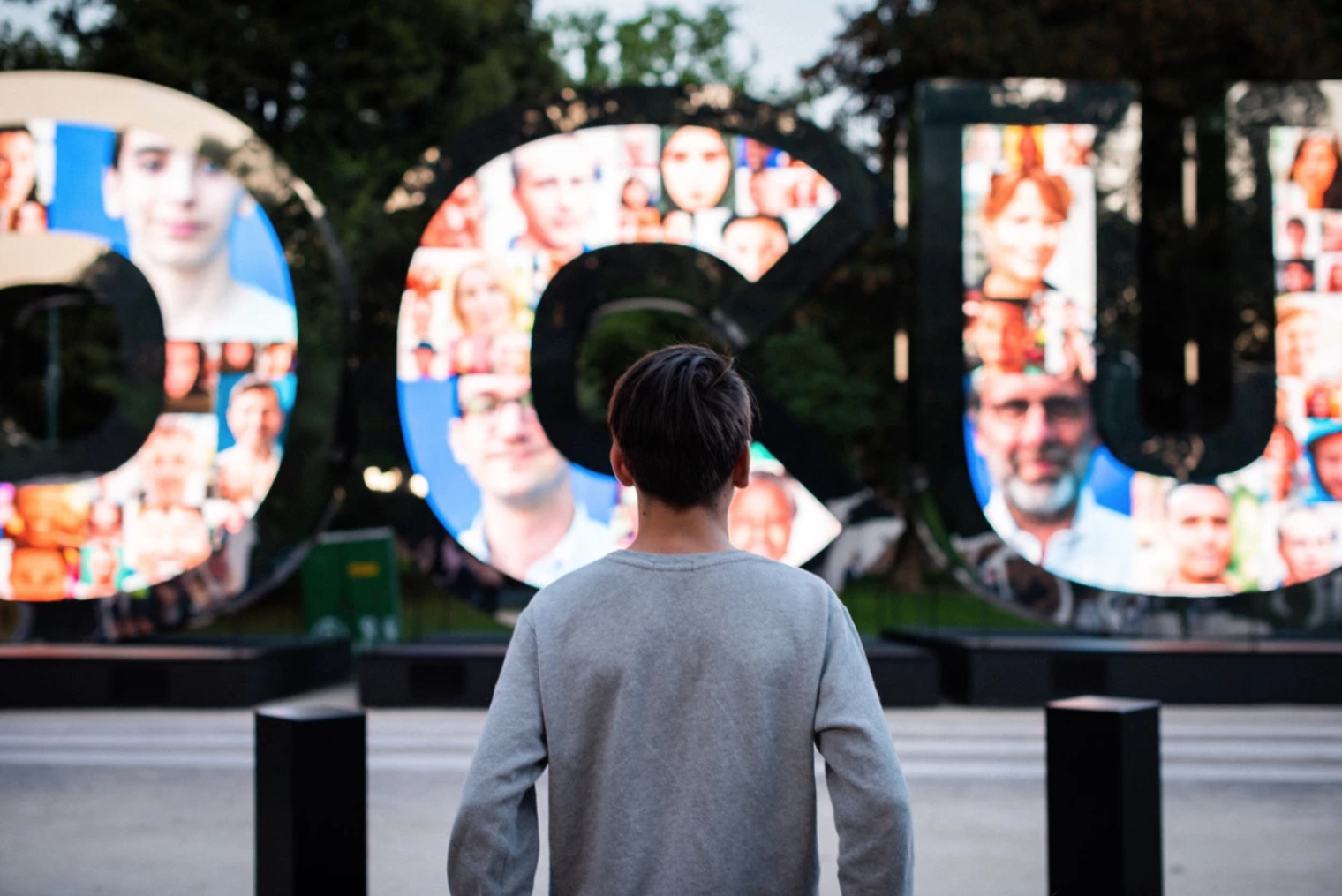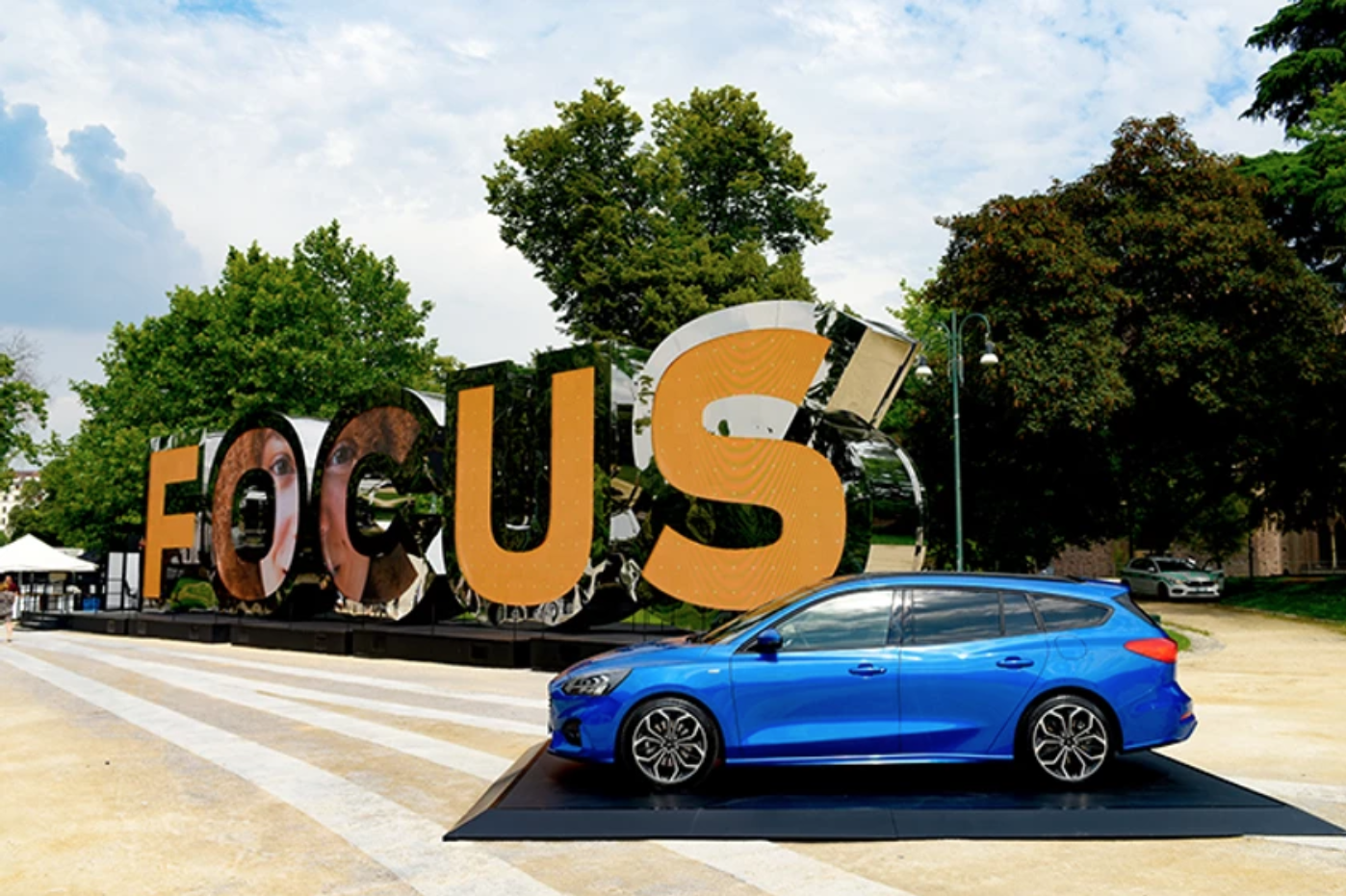Ford My Focus
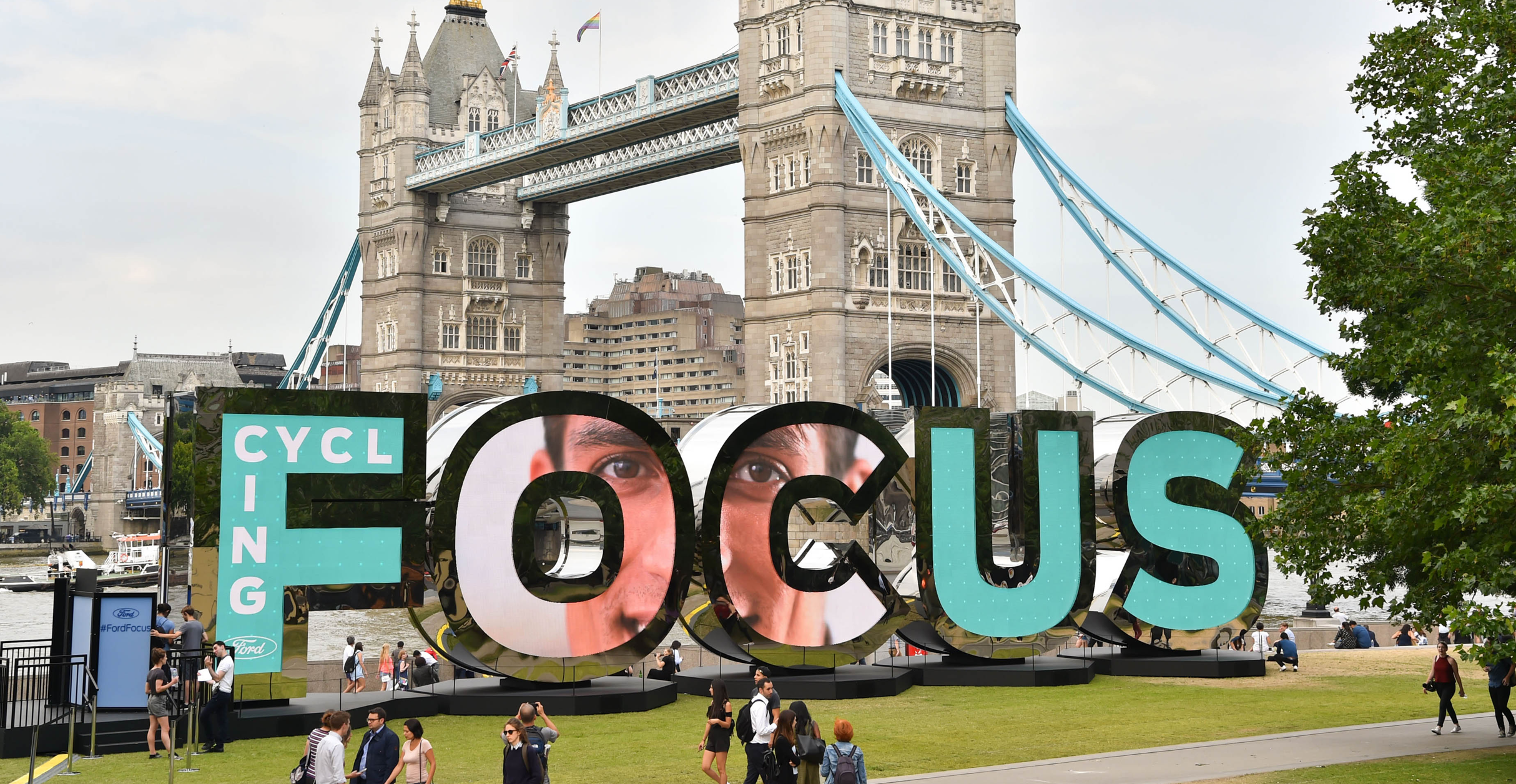
My role
My role as a UX Designer was primarily to develop a user journey that captured the interactions between all the actors in the system (guests, hosts, moderators) and the technology, to create a seamless guest experience. I produced UX documentation to inform both the client at Ford about the guest experience, as well as creating technical documentation for the creative, development and production teams at Imagination.
The deliverables I produced included: a swim lanes diagram that combined the user journey with the various touchpoints of the experience, storyboards, dialogue flows and wireframes for the guest management system and image moderation.
Background
MY FOCUS was an interactive campaign that originated from understanding the reasons that lead customers to pick a specific Ford Focus vehicle and celebrate them. Each customer may be influenced by aspects of their personal life when choosing a car, such as their family, profession or hobbies. The campaign aimed to showcase the stories of current customers, as well as captivating new customers and tailoring the service based on their goals.
Concept
As I joined the project, the creative direction was to build an outdoor installation that would captivate bystanders to interact with it and receive a digital souvenir. The installation would spell out the word FOCUS and have LED screens embedded across the letters so that it would be well visible to a crowd.
Interested guests would interact with Foci, the AI conversational technology, on a mirrored interface and camera placed on the side of the letter F. While engaging in a conversation with Foci, guests would reveal their passion and their portrait would be taken. The portrait and photographs related to the guests’ passion would be shown across the FOCUS letters. They would also get a video of their experience sent to them via email so they could share it on social media.
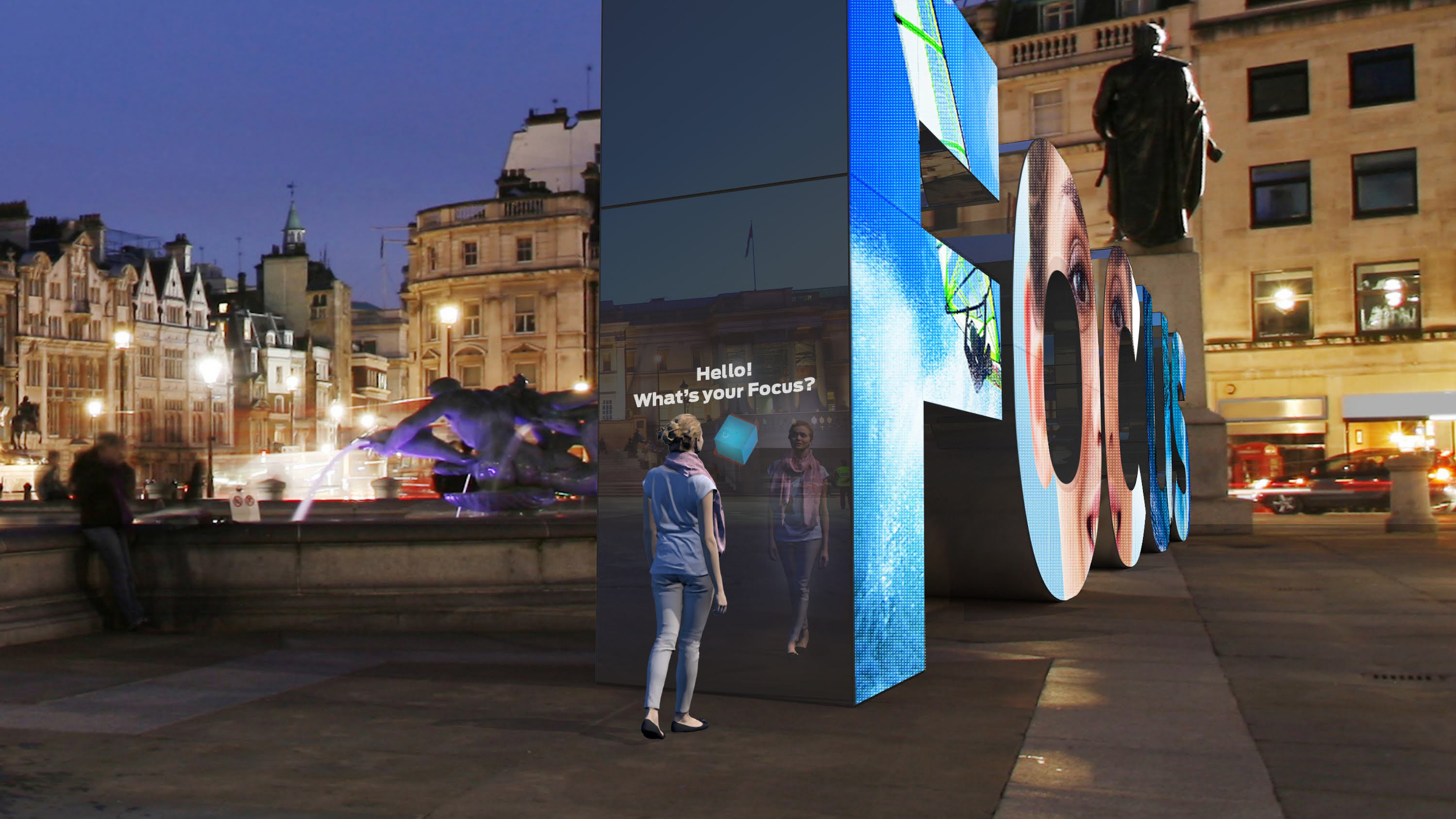

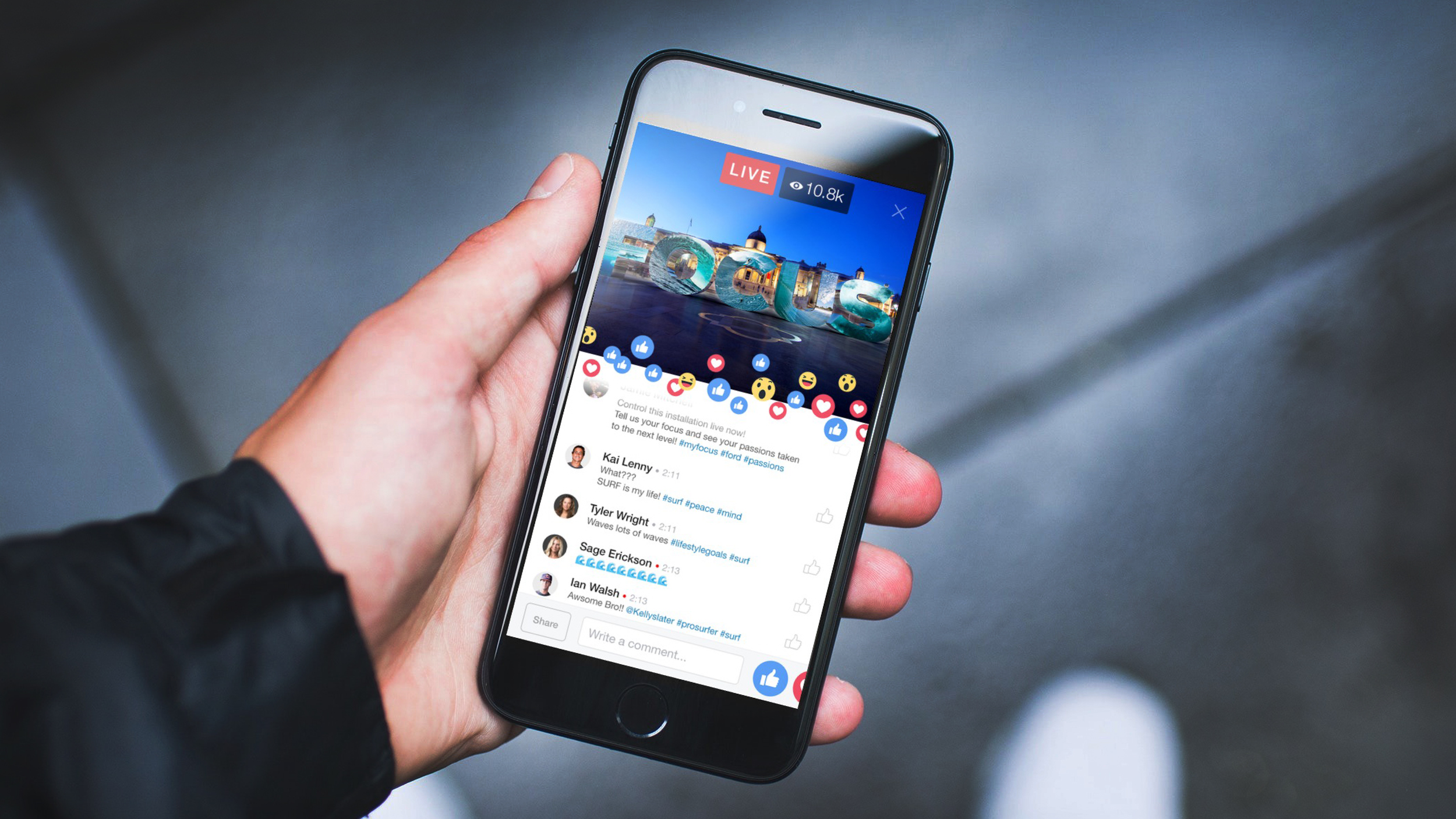
Guest experience
To produce a user-centric experience, I started by planning out the guests’ journey from the acquisition state until they see the outcome on the letters and get their souvenir of the experience. The user journey included the following steps:
Guest journey describing the key steps of the experience
The user journey enabled us to describe what guests would be doing at each stage and what would be needed both from technology and the hosts. I also put together a storyboard to mimic the guests’ course of action in more detail.
At this point, the user journey and storyboard were reviewed with the rest of the team (Creative Director, Digital Producer, Technical Director and UX Lead) to see if the creative vision was being met as well as if there would be any technological limitations. I was then provided with a swim lanes diagram with a state flow of the various technologies used during the experience by the developing team. The diagram included: the language processing technology for Foci, the cameras (on Foci and the others cameras positioned to record the experience), the LED screens, the registration and guest management system, image retrieval and the souvenir package.
I added the user journey steps to a new swim lanes diagram so that we could visualise not only the user journey but also the interactions with the technology. This diagram was an extremely useful tool for discussions about the user journey in meetings with different members of the team because it provided an overall view of the system with enough detail to assess if the requirements of the guests, the business and the technology were being met. From then it was also the starting point to define the journeys and the system requirements for Foci, the hosts and the supporting staff on-site.
Swim lanes diagram used as the central communication tool between design and production (some details need to be omitted)
Foci
Foci was the name given to the AI technology used in the installation. The interface consisted of a mirror and a camera facing the guest, and the conversation AI was capable of processing speech in various languages and retrieving a response.
The ideal interaction flow between Foci and the guests was imagined as a natural conversation that started with a greeting and introduction, followed by the guest revealing what was their passion. To achieve, this the AI needed to be able to process the speech and retrieve an appropriate response. I created a mock script with several dialogue questions and possible answers to depict use-case scenarios and have a better understanding of the technology requirements. This enabled the creation of scenarios where the conversation had the expected flow, as well as scenarios with bottleneck points.
Storyboard depicting the live experience
Conversation guide for Foci (AI interface)
Wireframes for visitor registration
Hosts and moderators
It was also necessary to define user journeys for the event assistants on site. Three hosts were assisting the guests:
Host 1: responsible for registering guests, controlling the queue and helping guests upload any personal images they would like to share on the letters
Host 2: manages the queue of registered guests incoming from host 1 and confirms that the first name on the list corresponds to the person that is about to start the interaction with Foci
Host 3: overlooks the queue of people that have interacted with Foci and ensures that the images on FOCUS letters are shown at the right timing
I created wireframes for a tablet-based system for hosts to able to register guests and have real-time updates of the other tablets in the network about guests in the queue.
Furthermore, some moderators monitored the quality and appropriateness of the images shown on the letters, as well as the conversation with Foci. I made wireframes for a desktop system to enable moderators to visualise the photomontage to be shown on the letters and also another interface to read the conversations with Foci.
Wireframes for guest registration with host 1
Live campaign
The final product was an outdoor installation that consisted of the FOCUS letters with embedded screens and a conversational AI called Foci. After the interaction with Foci, the guests’ passions would be shown in pictures on the FOCUS letters. The campaign was launched in the Summer in various European cities, including London, Milan, Berlin and Madrid.






